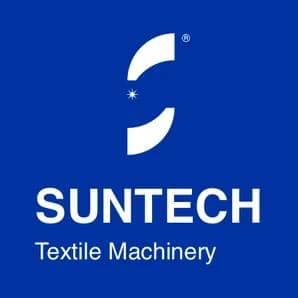In modern textile manufacturing, the final packaging of products is not only about appearance, but also directly affects the protection effect during transportation, customer awareness of the brand, and the efficiency of the entire supply chain. With the continuous increase in the types of fabric rolls and the complexity of orders, the traditional manual packaging method has increasingly exposed the disadvantages of low efficiency, poor consistency, and high labor intensity. For this reason, more and more textile companies have begun to introduce automated packaging systems to achieve all-around optimization in terms of quality, cost, and delivery time.
Improve the Consistency and Stability of Packing Quality
The automated cloth roll packaging system can perform unified standard packaging processing on rolls of different types and sizes by accurately setting parameters, avoiding omissions and differences in manual operation:
Uniform packing tension: By automatically controlling the tension of the wrapping film, the wrapping film can be prevented from falling off or the cloth roll from deforming during transportation due to different tightness.
Neat and uniform appearance: The packaging edge is flat, and the appearance is standardized, which is convenient for warehousing and shipment, and is more in line with the acceptance standards of large buyers.
Dust-proof, moisture-proof, and pollution-proof: The automatic wrapping process can achieve full coverage without dead corners, effectively prevent the cloth surface from being exposed to air and contaminated, and extend the product's shelf life.
Automatic generation of barcode identification: With system integration, barcode labels and production information can be printed simultaneously, which is convenient for customers to trace and sort later.
In contrast, manual packaging often has problems such as loose film sealing, torn corners, or irregular label positioning due to large differences in operating methods, which not only affect the appearance but also have practical defects.
Significantly Reduce Packing-Related Costs
Although the introduction of an automated packaging system requires a certain initial investment, from an operational perspective, the long-term savings in labor, materials, and time management are very attractive.
Reduced labor costs: Traditional packaging usually requires multiple people to operate, especially during peak shipping periods, where temporary additional manpower is often required. The automatic packaging machine can easily manage multiple workstations with one person, greatly reducing the labor burden.
More optimized material use: The automatically controlled film coating system can accurately match the film according to the size of the roll of cloth, avoiding the waste of consumables such as adhesive film and heat shrink film, and reducing material costs.
More controllable equipment life and maintenance costs: The modular design of modern packaging equipment facilitates daily maintenance and troubleshooting, and the overall operating costs are more predictable.
Save space and improve storage efficiency: The rolls of cloth after automatic packaging are neat and stacked safely, which is conducive to improving warehouse utilization and saving management costs.
In the context of raw material price fluctuations and labor shortages becoming the norm in the industry, automated packaging has built a "cost moat" for enterprises.
Faster Delivery Cycle
In today's market environment with fierce competition and an increasingly obvious trend of order fragmentation, "delivery time" has become an important indicator for customers to evaluate suppliers. The automated packaging system has greatly accelerated the delivery speed with its efficient, continuous, and stable operation.
All-weather operation without interruption: No shift work is required; the equipment can run continuously, especially suitable for large-volume orders or urgent orders.
Linked with production lines: Some automatic packaging systems can be connected with cloth inspection machines, cloth rolling machines, and ERP systems to achieve seamless connection from inspection to packaging and reduce transit waiting time.
Batch processing is more efficient: Once the parameters are set, the equipment can continuously pack multiple batches of cloth rolls, especially during the peak shipping period, showing obvious efficiency advantages.
Reduce rework caused by human errors: Automatic packaging reduces problems such as mispacking and mislabeling, and avoids delays in shipments due to repackaging.
Faster delivery means higher customer satisfaction and stronger order-taking capabilities, which in turn help companies stand out in a changing market.
Improve Customer Trust
Automated packaging is not only a productivity tool, but also a reflection of brand image. At a time when end customers are increasingly paying attention to "professionalism", "cleanliness", and "consistency", the neat appearance and standardized processes brought by automated packaging are the key to building trust.
Demonstrating the level of modern factory management: Standardized packaging output allows customers to intuitively feel the company's investment in management and quality control.
Supporting sustainable development goals: Some high-end automatic packaging equipment can be used in conjunction with environmentally friendly film materials to reduce excess consumables, reflecting the company's environmental protection concept.
Convenient for post-sales retail or garment production: Unified packaging can bring convenience to downstream customers in fabric storage, sorting, and cutting, and enhance cooperation stickiness.
In the context of increasingly "soft power" order competition, automated packaging has long been not only an efficiency tool, but also a manifestation of "product added value".
Conclusion
From improving quality to reducing costs, from accelerating delivery to winning customer trust, automated packaging of fabric rolls is no longer "icing on the cake" but a necessary path for every textile company to move towards modernization and digital transformation.
Facing the future, smarter, more efficient, and more environmentally friendly packaging solutions will continue to promote the upgrading of the textile industry. If your company is facing an increase in orders, labor shortages, or quality control problems, then introducing an automated cloth roll packaging system may be the best starting point to solve the problem and achieve leapfrog development.







